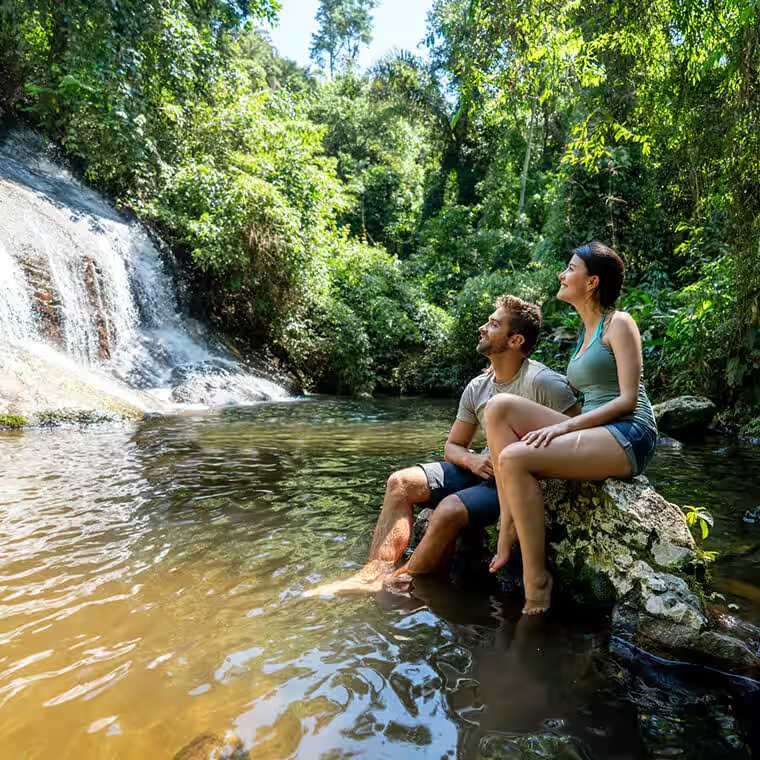
Our country is one of the most biodiverse on the planet, so its beautiful landscapes never fail to amaze nature lovers.
The Amazon rainforest, páramos where water is born, Caribbean beaches with living Indigenous heritage, star-filled deserts, and Andean valleys covered with wax palms are all part of this richness.
If you’re looking for places to do ecotourism in Colombia, here you’ll find a warm, practical guide to help you choose the best destinations.
So keep reading, pack your bags, bring good company, and get ready to enjoy breathtaking places.
Where to Do Ecotourism in Colombia?
Colombia offers a generous list of destinations for eco-minded travelers, thanks to its geography and its immense wealth of flora and fauna.
For this guide, we selected some of the most beautiful places where you can live an unforgettable experience.
Sutatausa and the Ubaté Valley (Cundinamarca)
Just 2 hours from Bogotá, this small, picturesque town is brimming with nature, ancestral art, and history.
Its imposing Farallones deliver panoramic views over the Ubaté Valley and hiking routes along rocky ridges, viewpoints, and archaeological vestiges (pictographs).
Farther north awaits the Fúquene Lagoon, where you can go birdwatching or enjoy a peaceful boat ride.
Sutatausa and the Ubaté Valley are magnificent getaways to break free from routine and city chaos and immerse yourself in nature.
It’s an Andean ecotourism experience with rural identity, traditional cheesemaking, and high-mountain scenery.
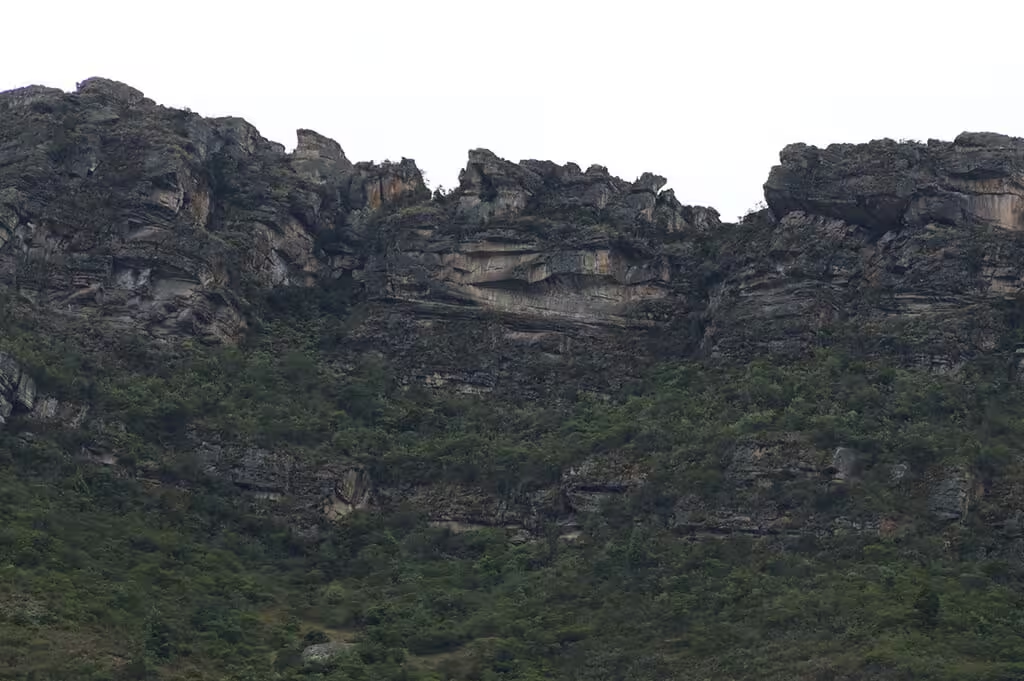
Sierra de la Macarena and Caño Cristales (Meta)
Set between Amazonian rainforest and the savannas of the Orinoquía, the Sierra de la Macarena shelters unique ecosystems: forests, wetlands, and a wide variety of endemic species.
One of the most visited sites is the famous Caño Cristales, celebrated for its red, green, and yellow hues when the aquatic plant Macarenia clavigera blooms.
Even so, the Sierra de la Macarena offers many other not-to-miss places if you want an unforgettable experience.
Caño Canoas, Caño Indio, Salto del Águila, La Escalera, and Tablas de Moisés are natural attractions you can also add to your route.
The best season to see the river at its most colorful generally runs from June to November.
It’s a destination with regulated capacity: book with authorized operators and follow conservation rules to the letter.

Tayrona National Natural Park (Magdalena)
Turquoise sea, tropical dry forest, mangroves, and mountains descending from the Sierra Nevada de Santa Marta to the Caribbean.
Beyond its biodiversity, Tayrona is ancestral territory of Indigenous peoples within the “Línea Negra,” so respecting sacred sites is essential to any visit.
Hiking, snorkeling in authorized areas, and iconic beaches await. Always check which areas are open and follow the Park’s recommendations.
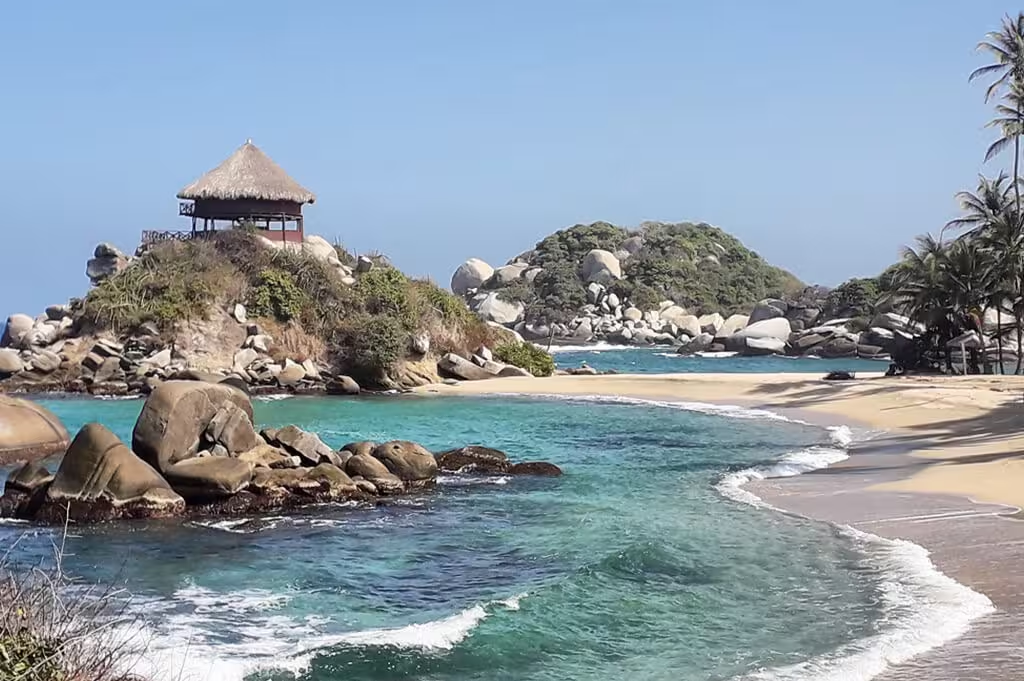
Chingaza (Cundinamarca and Meta)
Just over an hour and a half northeast of Bogotá, Chingaza National Natural Park protects páramos and high-Andean and sub-Andean forests.
This majestic reserve spans 11 municipalities—7 in Cundinamarca (Fómeque, Choachí, La Calera, Guasca, Junín, Gachalá, and Medina) and 4 in Meta (San Juanito, El Calvario, Restrepo, and Cumaral).
Chingaza is home to the Andean bear, deer, and a network of lagoons that supply water to millions of people.
It’s perfect for hiking along official trails and for páramo photography with frailejones. Dress in layers, respect signage, and check which sectors are open before you go.
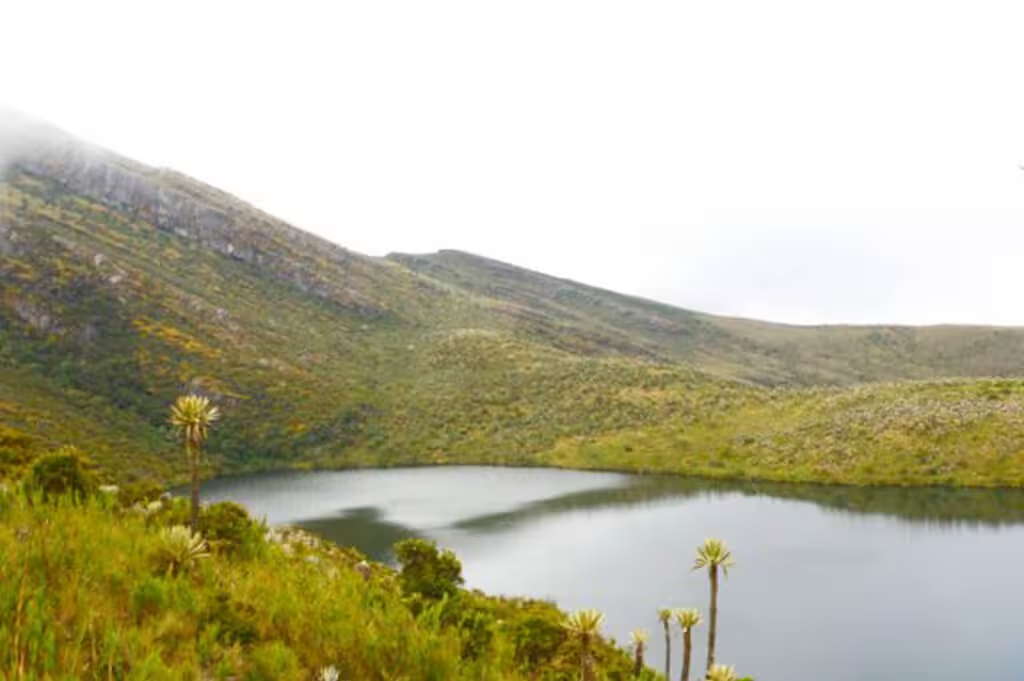
Los Nevados (Coffee Region)
Volcanoes, remnant glaciers, and páramo and super-páramo landscapes make Los Nevados a classic of Andean ecotourism.
The park’s main draw—right in the heart of Colombia’s Coffee Region—are the three snow-capped peaks: Ruiz, Santa Isabel, and Tolima.
Also notable are the páramo zones of Santa Rosa, Quindío, and El Cisne. Although access to certain sectors may vary for safety or conservation reasons, the park remains a living high-mountain laboratory.

Iguaque (Boyacá)
Near Villa de Leyva, at an altitude of 3,599 meters in the Eastern Andes, you’ll find the Iguaque Flora and Fauna Sanctuary.
Here lies the sacred Iguaque Lagoon, from which, according to Muisca legend, Bachué, the mother of humanity, emerged. The park protects glacial-origin lagoons and wastelands essential for regional water regulation.
The hike to the lagoon is a classic for nature lovers seeking a connection to Muisca myth and high-mountain ecosystems.

Cocora Valley (Quindío)
Between clouds and coffee farms stretches the Cocora Valley, cradle of the wax palm (Ceroxylon quindiuense)—Colombia’s national tree.
The valley is one of the gateways to Los Nevados and a favorite among nature lovers. Its trails lead through cloud forests and towering wax palms that exceed 50 meters.
It’s an icon among the places to do ecotourism in Colombia.

Amacayacu (Amazonas)
Deep in the Amazon, Amacayacu blends flooded forest, rivers, and Indigenous communities that safeguard an extraordinary biological heritage.
This stunning area hosts one of the greatest concentrations of biodiversity in the country, with about 5,000 plant species, 460 bird species, and 150 mammal species.
There are roughly 267,000 hectares of humid rainforest where you can spot the tiny pygmy marmoset, the giant water lily, and the pink river dolphin.
From Leticia, excursions are arranged with formal operators—often with defined capacities and routes. It’s ideal for wildlife watching and intercultural learning.
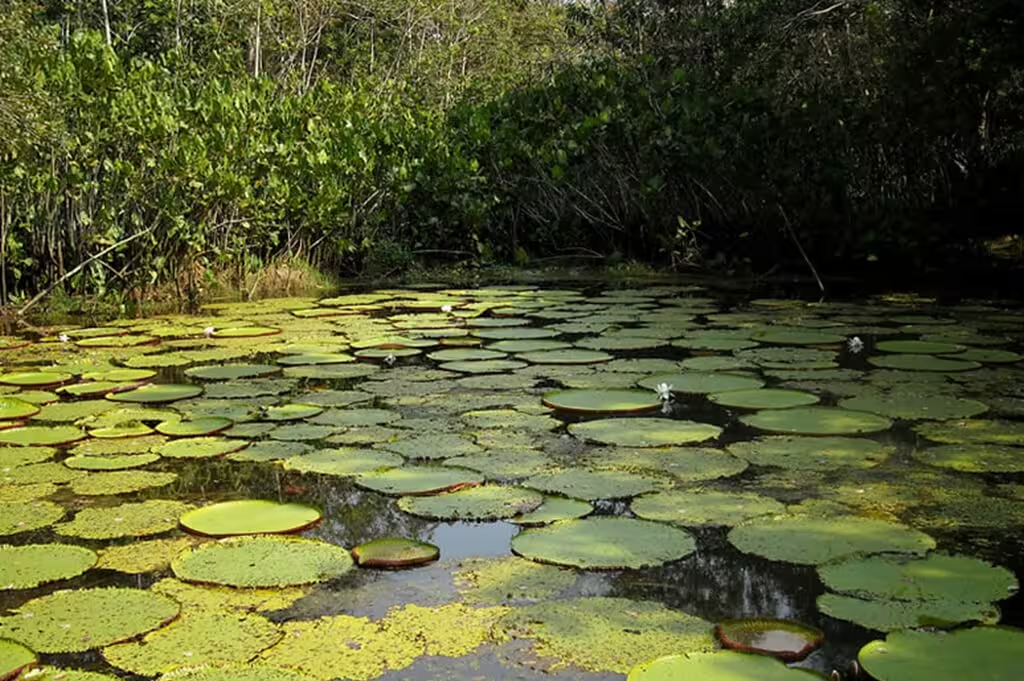
Tatacoa Desert (Huila)
Not all ecotourism is green. Near the town of Villavieja in Huila lies another beautiful place to enjoy nature responsibly: the Tatacoa Desert.
Its ochre tones invite hikes through eroded canyons and stargazing under one of the darkest skies in the country.
In fact, it’s recognized with Starlight certification and features local observatories—perfect for eco-friendly and scientific tourism.
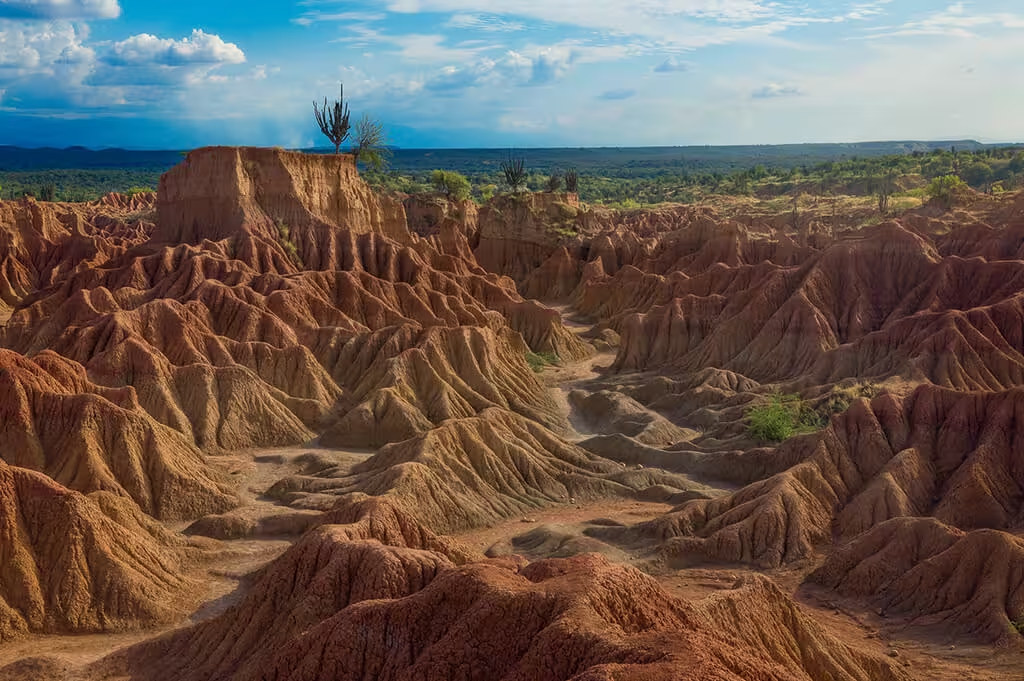
What Activities Can You Do on an Ecotourism Trip?
On an eco-focused getaway, you can enjoy many activities in harmony with nature. Here are a few:
- Interpretive hiking in high mountains, páramos, and cloud forests (Chingaza, Iguaque).
- Wildlife and flora observation with local guides (Amacayacu, Tayrona).
- Birdwatching in wetlands and reserves (Fúquene Lagoon, Amazon).
- Snorkeling and scuba diving in authorized marine areas (Tayrona).
- Nature and landscape photography (Los Nevados, Cocora).
- High-mountain treks focused on glaciers and lagoons (Los Nevados, Iguaque).
- Scientific tourism and astro-tourism (Tatacoa).
- Responsible boating on lagoons, rivers, and creeks (Fúquene Lagoon, La Macarena, Amazon).
- Environmental education with local communities (Amacayacu, Cocora).
- Ridge-line hiking with cultural heritage (Sutatausa and its rock art).
General good-practice tip for protected areas: use biodegradable sunscreen, do not feed wildlife, avoid campfires in unauthorized areas, respect temporary closures, and avoid drones unless you have explicit permission.
What’s the Difference Between Ecotourism and Adventure Tourism?
Ecotourism prioritizes conservation, environmental education, and benefits to local communities.
It takes place in fragile natural areas (parks, sanctuaries, reserves) with carrying capacity and clear visitation rules.
Travelers actively help protect the site (for example, by using biodegradable sunscreen, hiring local guides, and staying on marked trails).
Adventure tourism focuses on the physical experience (adrenaline/challenge) such as climbing, rafting, or canyoneering.
It can happen in similar landscapes, but its goal is not, by itself, to interpret ecosystems or prioritize conservation.
Both approaches can coexist when managed responsibly (formal operators, safety protocols, permits, and minimal impact).
In practice, many experiences in Colombia combine the two—e.g., demanding high-mountain hikes with environmental interpretation in Los Nevados, or ridge and rock routes in Sutatausa.
The key is to get informed and choose providers who follow conservation and safety guidelines.
Mini-Guide to Planning Your Ecotourism Trip
- Check official sources for capacity limits, closures, and seasons (e.g., Caño Cristales’ color season typically starts mid-year; consult Parques Nacionales and/or Colombia.travel before buying tickets).
- Hire local guides and operators: they create jobs and help ensure rules are followed (especially in places like Amacayacu or Tayrona).
- Respect local culture: in Tayrona and the Sierra Nevada there are sacred sites; follow signage and the park authority’s recommendations.
- Gear and conduct: sturdy hiking boots, layers for páramo cold, hydration, and a strict “leave no trace” mindset (pack out all waste, don’t remove plants, and don’t feed wildlife).
If your trip takes you through Cundinamarca, remember that Sutatausa is a natural balcony facing the Farallones and just minutes from the Ubaté Valley.
From Sumangá Hotel Boutique, a romantic, pet-friendly hideaway, you can arrange easy to moderate hikes, visit viewpoints like Piedra Colgada, and plan birdwatching outings in Fúquene.
When we think of places to do ecotourism in Colombia, we also think of experiences that care for the land and its people. We’ll be here to help make it happen.



